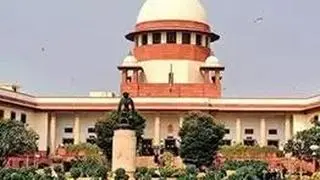People above 45 years in India have an average per capita income of ₹44,901, a third of them suffer from hypertension and cardiovascular diseases, and nearly 32 per cent have availed loans for some purpose or the other, but only one quarter (26 per cent) of these households have some sort of health insurance cover in 2017-18, according to the first-ever longitudinal ageing study of India (LASI).
‘Not open defecation free’
It also showed that 38 per cent of rural households in the country still prefer to defaecate in the open, contrary to the claims of Swachch Bharat Abhiyan. The proportion of rural households practising open defaecation was 63 per cent in Uttar Pradesh and Bihar.
“It is India’s first and the world’s largest ever survey that provides a longitudinal database for designing policies and programmes for the older population in the broad domains of social, health, and economic well-being,” said Health Minister Harsh Vardhan while releasing the findings of the study.
Launched in 2016, LASI was carried out by the Health Ministry’s National Programme for Health Care of Elderly and International Institute of Population Sciences jointly with Harvard TH Chan School of Public Health and University of Southern California.
It covered a baseline sample of 72,250 individuals aged 45 and above and their spouses, including 31,464 elderly persons aged 60 and above and 6,749 persons aged 75 and above from all Indian States and Union Territories barring Sikkim, which is continuing with data collection.
In 2011 census, the 60+ population in India was 10.3 crore, accounting for 8.6 per cent of total population. Growing around 3 per cent, their number is expected to swell to 31.9 crore by 2050. With every three of four elderly persons suffering one or other chronic disease, 40 per cent of them having one or other disability and 20 per cent having issues associated with mental health, this report will provide base for national and State level programmes and policies for elderly population, the Minister said.
Once in two years
The current survey was carried out between April 2017 and December 2018 and it is expected to be carried out once in every two years for getting comparative data. The survey covered 65,506 sample households with a total household population of 3 lakh.
Age groups
The survey helped to ascertain the proportion of population according to broad age groups. While 27 per cent of Indian population belongs to an age band of 0-14 years, 61 per cent of the population are in the working age group of 15-59 and 12 per cent are aged 60 and above.
Schooling
The survey also found that 31 per cent females (age 6 and above) and 16 per cent males never attended schools. The median years of schooling in urban areas were 10 years in urban areas and eight in rural areas. Similarly, the death rate during the survey period (2017-18) was 7.7 per 1,000 population.
Ninety four per cent of sampled households had access to an improved source of drinking water, while 92 per cent to electricity. But only one-third of Indian households used some methods to make water safer for drinking.








Comments
Comments have to be in English, and in full sentences. They cannot be abusive or personal. Please abide by our community guidelines for posting your comments.
We have migrated to a new commenting platform. If you are already a registered user of TheHindu Businessline and logged in, you may continue to engage with our articles. If you do not have an account please register and login to post comments. Users can access their older comments by logging into their accounts on Vuukle.